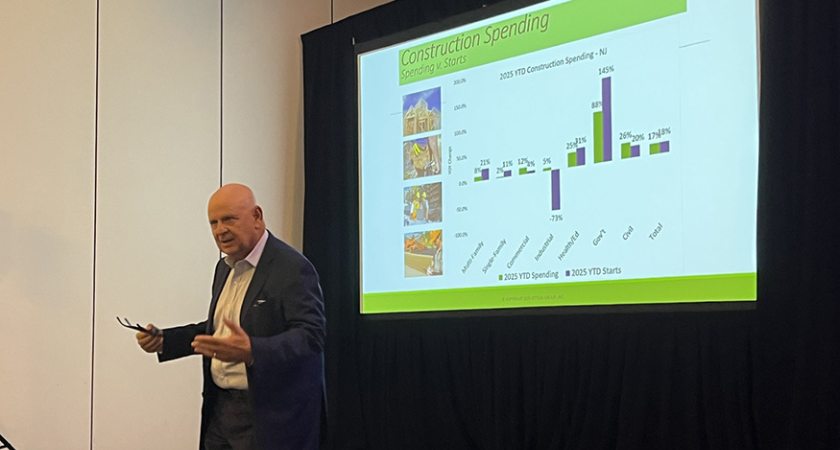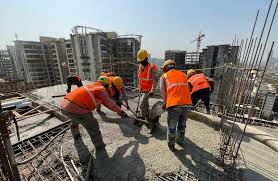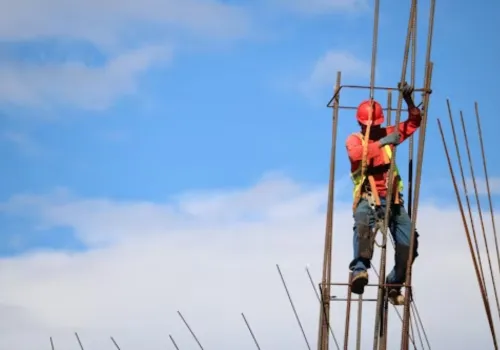
LONG BRANCH, NJ — Construction in New Jersey is poised for a strong rebound in 2025, according to economist Jeffrey Otteau, speaking at the Associated Construction Contractors of New Jersey (ACCNJ) Fall Convention. The three-day event drew more than 200 industry professionals to the Ocean Place Resort & Spa, where Otteau delivered a detailed economic and construction outlook for the state.

“No matter how you slice it, it looks like there’s a lot more business coming into the sector,” Otteau said, highlighting that the state’s construction spending is expected to exceed $16 billion this year.
The economist cited several positive indicators: falling interest rates, declining inflation, and a steady decrease in oil prices, all of which are expected to encourage new project starts, boost employment, and drive revenue growth. “Generally speaking, when interest rates decline, the economy grows and construction spending increases even more than we’ve seen already,” Otteau said.
Otteau broke down the impact across commercial real estate, multifamily, industrial, and civil construction sectors:
Spending and transaction volumes are starting to recover after falling from $13B in 2021-22 to $6B in 2023.
Starts are up 20% year-to-date, signaling a competitive market for apartment and mixed-use buildings.

Infrastructure projects continue to surge, with government work up 145% and civil construction spending up 26%, fueled in part by the federal Infrastructure Investment and Jobs Act.
After a pandemic-driven boom, industrial starts have dropped 73%, reflecting market corrections.
“These trends indicate that spending is going higher because the new starts will generate construction dollars for years to come,” Otteau explained.
Despite the positive outlook, New Jersey faces labor shortages and wage pressures. “There’s going to be more and more demand with a limited supply of labor people to work those jobs,” Otteau noted. The state’s construction labor market is further complicated by off-the-books employment and a high percentage of undocumented workers.
Material costs are another concern, particularly with tariffs affecting construction inflation. Otteau reported 4.2% construction inflation in North Jersey and 3.5% in South Jersey for 2025.
Otteau highlighted the broad economic effects of construction, dividing them into three categories:
Jobs, wages, taxes, and operational activity generated immediately by construction projects.
Business-to-business transactions across supply chains.
Household spending from wages earned on construction projects, which fuels local retail, housing, and services.
“A project’s construction bill doesn’t just build the building; it stimulates the entire local economy,” he said.
Otteau provided examples from both North and South Jersey:
150,000 sq. ft. warehouse in Montville, $28.9M cost, creating 372 jobs, $35M labor income, $12.3M GDP contribution, $9.5M tax revenue.
Comparable facility in West Deptford, $25M cost, generating 361 jobs, $24.7M labor income, $10.2M GDP, $7.9M tax revenue.
“These projects generate benefits totaling one and a half times their actual costs,” Otteau said. “The construction bill doesn’t cost anything—it gives back more than it takes.”
With $140 billion in planned projects statewide over the next five years, Otteau emphasized the scale of opportunity. “More business, significant growth, more demand, and how are you going to satisfy that?” he said. Opportunities are especially strong in data centers, refrigerated warehouses, multifamily housing, and infrastructure projects.
“Construction spending is going to rise. We’ve already seen the rebound; lower interest rates will boost it even further,” Otteau concluded, underscoring the sector’s vital role in New Jersey’s economy.
Originally reported by NJBIZ Fall 2025 Real Estate Report in NJBIZ.